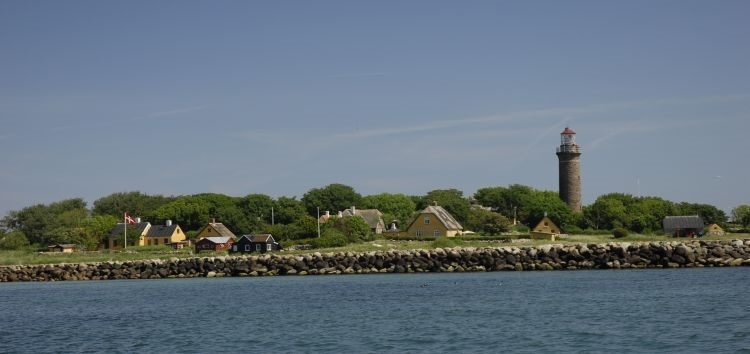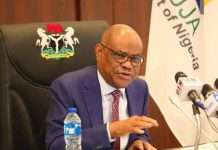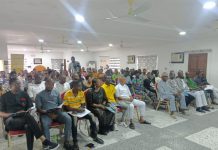Nigeria has proposed that crude oil tankers should be granted exemptions from BWM Convention if they use a port-based ballast water treatment solution
The solution to ballast water treatment proposed by Nigeria at MEPC 74 is called “Ports with acceptable risks,” and is aimed at the large tankers that call at Nigerian ports to load crude oil. In general, these large tankers (Aframax, Suezmax and VLCCs) trade between Nigeria and a limited number of oil terminals.
The Nigerian proposal seeks to take advantage of the exemptions in BWM Convention regulation B-3 (resolution MEPC.297(72)), that the D-2 standards currently are mandatory for all new ships constructed/keel laid on or after 8 September 2017. For existing ships or ships constructed prior to 8 September 2017, compliance deadlines shall be through a phase-in schedule linked to the ship’s IOPPC renewal survey up to the year 2024.
The Nigerian paper also refers to the language in regulation B-3.7 that permits the use of other methods of ballast water management to achieve at least the same level of protection of the environment, human health, property or resources as described in regulations B-3.1 to B-3.5, and approved in principle by the MEPC.
The proposal is for ports to use a type-approved onshore ballast water treatment system. The Nigerian paper proposes two methods. The first method is described as:
“The hypothetical case of crude oil trade route between only ports with onshore (pre- and post-loading) ballast water treatment systems. Crude oil is loaded from a hypothetical port that has an onshore treatment system somewhere in Nigeria and transported to any of the following hypothetical locations (or ports) which also have onshore systems: the United States, South Africa and India. After cargo has been discharged, treated ballast water from the onshore treatment system is loaded to the ship. The ballast water may be discharged at the next port of call without management, provided no mixing with unmanaged seawater and sediments from other areas has occurred.”
The conditions ascribed in the paper are:
Frequent voyages on a specific route.
Operates exclusively between specified ports or locations with onshore treatment systems.
No mixing of the ship’s ballast water (except where an approved onshore post-voyage treatment system/reception facility is available).
One advantage of the ports with acceptable risks proposal is that the exemption would give operators significant capital and operating cost savings over fitting a ballast water treatment system. Another advantage is the removal of the uncertainties and risks associated with a malfunctioning system.
The second exemption concept proposed by Nigeria is the Pre-loading Onshore Ballast Water Treatment System. This concept requires harbour water to be pumped ashore at a ballast water treatment facility in the port, and stored in a tank farm. During cargo operations, vessels in the port will not pump in raw harbour water to maintain stability and trim but connect directly to the tank farm and take on the treated harbour water as ballast.
It should be noted that this is not the same concept as the Danish, Swedish and INTERFERRY paper on same risk area (SRA) activities, which presented the results of a study on assessing risk in SRAs to MEPC 74. The SRA concept was approved by MEPC 71 as a risk-assessment mechanism under the 2017 Guidelines for risk assessment under regulation A-4 of the BWM Convention (G7) (resolution MEPC.289(71)).
The need to treat ballast water is a great concern to the operators of ferries between Sweden and Denmark, namely the Kattegat and the Danish Straits connecting the North Sea and the Baltic Sea. Several ropax ferry lines operate between Denmark and Sweden, and a small number of coastal operators trade between ports in the two countries. An original key driver of the SRA concept is the busy ferry lines operated between the ports of Helsingborg in Sweden and Elsinore in Denmark, where the less than 5,000 metres distance is crossed by ferries leaving port every 15 minutes for most of the day and night.
Paris Memorandum of Understanding ballast water deficiencies
In 2018 there was a steep rise in ballast water treatment system deficiencies in vessels inspected by the Paris MoU, a trend that is likely to grow
Since September 2017 the Paris Memorandum of Understanding (MoU) on Port State Control, which consists of 27 participating maritime administrations and covers the waters of the European coastal States and the North Atlantic basin from North America to Europe, has added the results of ballast water treatment system inspections to its public database of detainable deficiencies and deficiencies.
Paris MoU undertakes around 18,000 inspections each year. In 2018, the first full year of ballast water system pollution prevention inspections, it recorded a total of 564 deficiencies, seven of which were sufficiently serious to be detainable deficiencies. The main source of deficiencies was the Ballast Water Record Book, followed by Ballast Water Exchange, but the detainable deficiencies seemed to stem from crew training-related incidents (detainable deficiencies in parentheses below):
Ballast Water Record Book: 272
Ballast Water Exchange: 128
Ballast Water Management Plan: 98 (3 detentions)
Crew Training and Familiarisation: 35 (3 detentions)
Ballast Water Discharge Violation in Port: 13
Other BWM: 14 (1 detention)
Ballast Water Management System: 2
Construction Dates Applicable to BWM: 1
Prototype BWM: 1
Comparing year-on-year ballast water system deficiencies is only possible between September and December of 2017 and 2018. This reveals that the number of deficiencies related to ballast water on average doubled. In part, this could be assigned to the increase in the number of newbuildings with ballast water treatment systems fitted and an increase in the number of retrofitted systems on vessels calling at Paris MoU ports. Whatever the underlying causes of the trend, it appears to be upwards, with the annualised three months trend for 2019 showing a significant growth over 2018.
According to its 2018 annual report, the US Coast Guard (USCG) conducted 8,140 ballast water examinations, a similar number to that undertaken in 2017 (8,229). In 2018, the USCG identified 119 BWM deficiencies. The majority of the deficiencies were related to inoperable systems (mandatory practices or alternative management method), ballast water exchange, and the discharge of untreated ballast water into US waters.
The range of ballast water compliance failings found by the USCG
Each event was treated on a case-by-case basis with the USCG offering a range of remedies. In some cases vessels were required to modify their cargo-loading plan to facilitate safe and compliant ballast water discharges to be conducted offshore. The USCG noted that many of the interventions associated with ballast water management systems were attributed to vessel crews not actively using the system when trading outside US waters. The annual report states that operators are encouraged to include ballast water management systems in their vessels’ Safety Management System and continue to use the system to maintain crew members’ proficiency in using this equipment.
The chart shows the range of deficiencies. There are some common themes with Paris MoU, including crew familiarisation, untreated discharge in port and errors and omissions in documentation.








Thank you for reporting our proposal submitted at the IMO.
Dr. Lawrence Kuroshi